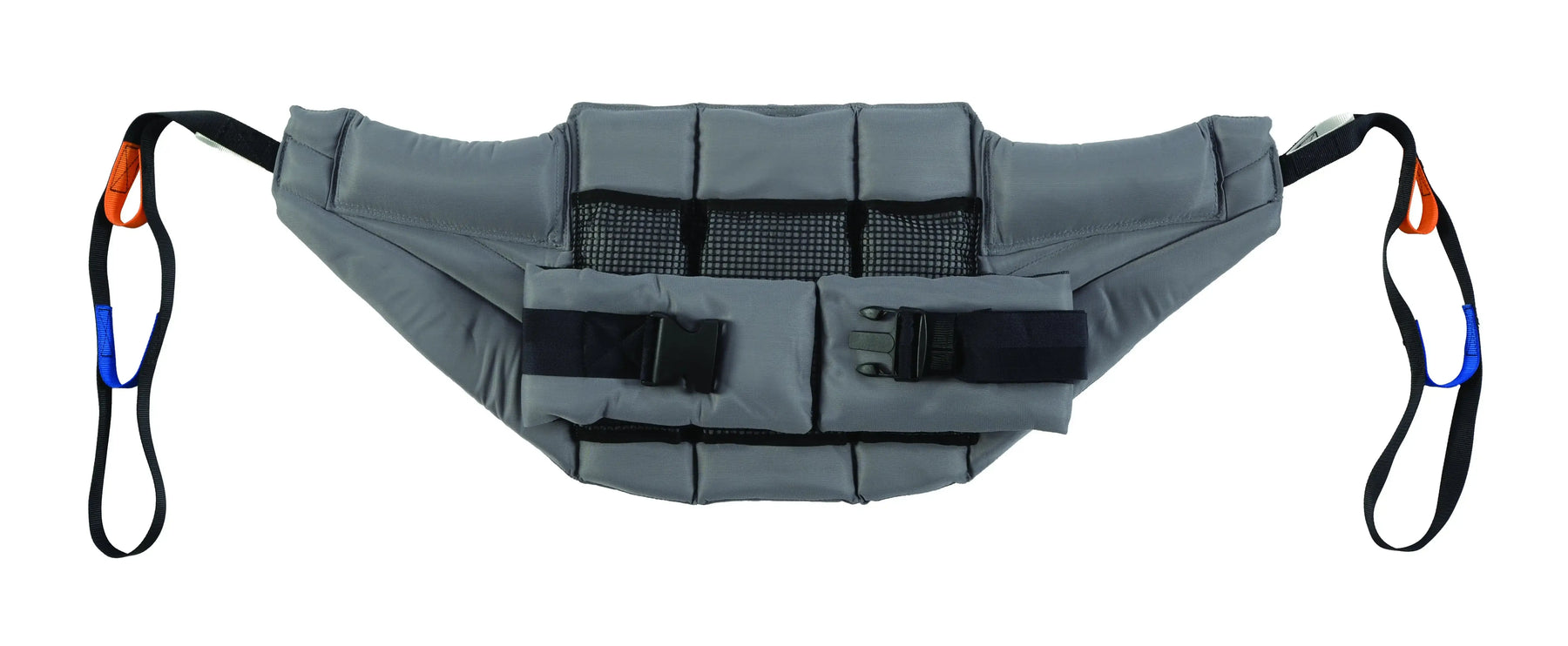What Is a Hoyer Lift Sling and How Does It Improve Patient Care?
What Is a Hoyer Lift Sling and How Does It Improve Patient Care?

At Reliable Ramps, we know that safe patient handling is one of the most important aspects of caregiving. A hoyer lift sling plays a critical role in ensuring transfers are comfortable, efficient, and safe. Whether you’re a caregiver in a professional healthcare setting or assisting a loved one at home, choosing the right sling is essential for maintaining safety, mobility, and dignity.
What Is a Hoyer Lift Sling?
A lift sling is the supportive fabric or pad that attaches to a patient lift sling system using strong straps. It evenly distributes body weight during lifting and ensures a safe patient transfer. Slings are available in different sizes and sling types to match specific needs—from bathing with a mesh sling to toileting with a commode opening.
Many slings are designed to be breathable, durable, and easy to clean, with some slings made of polyester, nylon, or solid fabric. Disposable options also exist for multiple patients in clinical environments. Whether slings feature head support or are available with or without head support, the sling design ensures both safety and comfort.
Different Types of Hoyer Lift Slings
When choosing a lift, it’s important to know the different types of hoyer slings:
Full Body Slings
A full body sling or full-body sling offers total support, including head support and lower back support. These slings are ideal for patients who cannot maintain a sitting position. Often made of mesh or polyester, they are also useful for bathing because the sling will allow water to pass through.
U-Slings and U-Shaped Slings
A u sling (or u-shaped sling) wraps under the thighs and around the lower back, leaving the arms outside. A cradle divided leg sling is a variation of this, allowing more flexibility when the patient is in a sitting position. These are among the most versatile sling types.
Commode Slings
Commode slings include a commode cutout or commode opening, which makes toileting and hygiene care easier. This type of sling supports safe patient handling during sensitive transfers.
Sit-to-Stand Slings
For patients with some mobility, a sit to stand sling allows movement from sitting to standing. These slings offer independence and can be part of rehabilitation.
Bariatric Slings
Bariatric options are built with a higher weight capacity, often up to 450 lb or more, ensuring safe transfers for heavier patients.
Key Benefits of Using a Hoyer Lift Sling
Safe Patient Transfers
A hoyer lift sling ensures consistent and safe movement, whether transferring to a chair or wheelchair, recliner, or bed.
Comfort and Support
Slings come in designs that provide head support, lower back and two thigh sections for balanced lifting, or without head support for patients with more control. A sling makes the process less stressful for both patient and caregiver.
Versatility in Use
From bathing with mesh slings to toileting with commode models, slings are designed for nearly every intended use. Many are available with or without head support, ensuring the right fit for every situation.
Reduced Caregiver Strain
By using a hoyer lift and patient sling, caregivers can complete transfers without injuring themselves. The sling design ensures weight is evenly distributed.
Materials and Construction of a Hoyer Lift Sling
Slings are made from strong, durable fabrics:
- Mesh: Breathable, quick-drying, perfect for bathe and shower use.
- Polyester: Lightweight, versatile, and easy to clean.
- Nylon: Strong and supportive, designed for repeated use.
- Solid Fabric: Provides more structure, ideal for patients who need firm support.
Some slings feature extra pads in the seat or thigh areas for comfort. Disposable options are also available when using with multiple patients.
How to Use a Lift Sling Safely
When working with a patient or resident, it’s critical to:
- Make sure that the sling is the appropriate sling for the patient’s needs.
- Wrap around the patient properly, checking for secure placement.
- Attach each strap to the hoyer lift frame.
- Confirm the weight capacity before lifting.
- Transfer slowly into a chair or wheelchair, bed, or sitting position.
Proper training ensures that the sling makes transfers safer and smoother.
How to Choose the Appropriate Sling
When selecting the right sling, consider:
- Mobility level – Is a full body sling or u sling more suitable?
- Intended use – Toileting, bathe, or daily transfers?
- Weight capacity – From standard slings to bariatric models like Medline with up to 450 lb limits.
- Comfort needs – Does the patient need head support or a sling design that allows for more independence?
Slings come in a wide variety, so it’s important to match the sling types to the patient’s daily routines.
Find the Right Hoyer Lift Sling at Reliable Ramps
A hoyer lift sling is not just equipment it’s a vital part of ensuring safety, comfort, and dignity in every patient transfer. Whether you need a full-body sling, u-sling, or commode sling, Reliable Ramps offers durable, high-quality solutions for both professional caregivers and families.
Explore slings available in different sizes, slings are designed for both supine position and sitting position, and models available with or without head support. Visit our website to browse our full line of hoyer lift slings and mobility products today.

Reliable Ramps
888-307-1839




